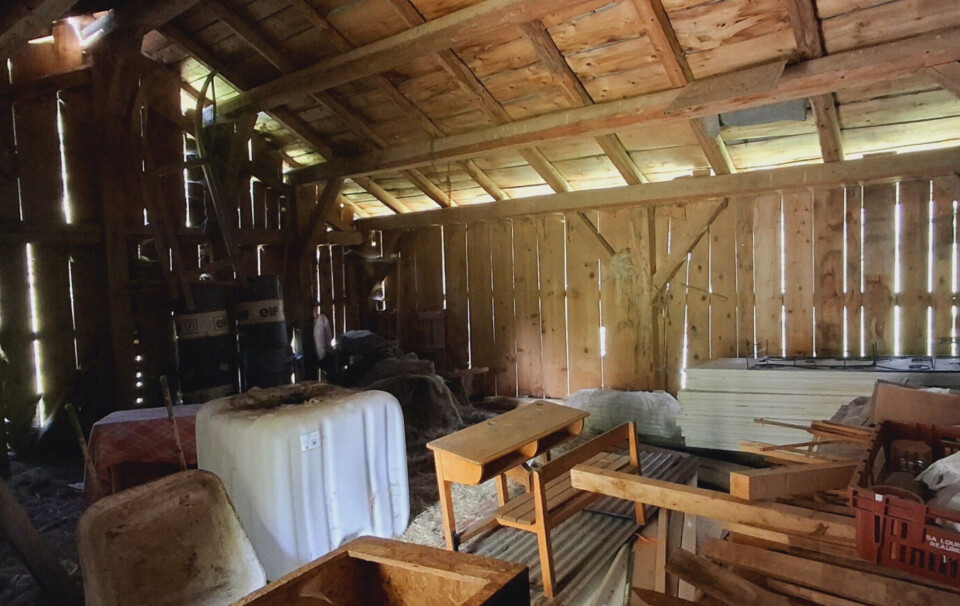Finding and harvesting nuts in France
Exploring the culinary and practical uses of walnuts from a part-time paysanne
Walnuts can be dried in prune trays
Sue Adams
At this time of year, nut trees come into their own.
During autumn their fruits ripen and fall. With the correct conditioning and storage they will last you a full 12 months, meaning you can be self-sufficient in, typically, walnuts, hazelnuts and even almonds.
They are also beautiful to look at and, when mature enough, are a perfect source of shade in the hot summer months. Our favourite eating area in the garden is underneath an enormous walnut tree which must be well over 100 years old.
The walnut is the king of nuts in France. Such is its importance that the French word for a walnut is “la noix” – which is also the generic word for any nut in the French language.
The walnut tree (le noyer) is most prolific around the Dordogne river valley in the Périgord, but it is not indigenous to the country. As in so many cases, the walnut came from the Middle East and was brought to us by the Romans.
Read more: Nuts about Châtaignes: The history of French chestnuts
Rich offerings
Four principal varieties are grown in the Périgord area – Marbot, Corne, Grandjean and Franquette. We have four mature walnut trees in our garden and they all produce slightly different nuts, so I like to imagine we are lucky enough to have all varieties.
Commercially, the walnut is harvested in October in a similar manner to the harvesting of plums. A machine clamps the tree around the trunk and shakes it.
The ripe nuts fall to the ground and are vacuumed up by something which looks like a cross between a lawn tractor and a mobile conveyor belt.
Domestically, we do things on a much smaller scale. From September onwards we go out into the garden every day and pick up walnuts which have fallen to the ground, choosing only those that have either lost their skins or are in the process of losing them.
We have learned through experience not to pick them from the tree (not quite ready yet) and not to include any which have fallen to the ground but which are covered in a black, dried out skin (much more likely to rot).
Occasionally, wild boar arrive during the night and wake us up as they loudly crunch through our rejects.
Read more: How to keep hens as part of a self-sufficient life in France
Shake it up
Once the ripe nuts are picked and any surplus green skin removed, they need to be dried.
There is, of course, machinery to do this on a commercial scale but we spread a single layer of walnuts over the base of old prune trays and leave them in the sun for a couple of weeks – giving the tray a shake every few days to turn the nuts.
We then store them in a dark but well aerated (and mouse-proof) cupboard for the next 12 months. We follow much the same process with hazelnuts as they also crop prodigiously in south-west France.
The walnut is also used as the basis for other traditional French products - notably a liqueur called vin de noix, which is made by marinating unripe walnuts, with their green skins still intact, in alcohol and a spice and sugar mixture for at least 100 days, and huile de noix, where the nuts are ground in a press to release their oil.
This exceptional oil has lots of health benefits and, unusually, can be kept in the fridge without solidifying – as would olive oil.
If you are travelling in the Dordogne this autumn, it is well worth buying some locally produced huile de noix as it works well in salads and I also use it to make my breakfast granola.
Furthermore, you can soak green walnuts in water for a few months to create a treatment for wood and can hide scratches in furniture by rubbing a piece of ripe walnut over the blemish to release the oil.
Trees must be at least five years old to produce walnuts in any quantity.
If you have a little bit of land and some time, you could plant a few trees of your own this winter and become self-sufficient in walnuts and many of the wonderful things you can make from them.





























